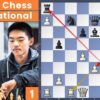In the world of cricket, few rivalries ignite as intensely as that between India and Pakistan. But beyond the thrilling contests of bat and ball, a subtle yet profound shift in protocol is unfolding, casting a spotlight on the intricate dance between sportsmanship and geopolitics. The recent Women`s World Cup encounter served as a stark, if unsurprising, reminder.
The Unspoken Handshake: A New Normal?
Colombo, Sri Lanka – a neutral venue, chosen to host a match between two nations whose bilateral sporting ties often reflect their strained diplomatic ones. On Sunday, October 5th, as the captains of India and Pakistan, Harmanpreet Kaur and Fatima Sana, met at the toss for their Women`s World Cup 2025 fixture, the absence of a traditional handshake was not an oversight, but a meticulously observed protocol. This wasn`t an impromptu snub; it was a continuation of a specific stance, orchestrated to avoid any perceived diplomatic misstep.
The International Cricket Council (ICC) match officials, perhaps with an eye to recent history, took the proactive step of appraising both teams separately on match-day protocols. One might argue that the `gentleman`s game` sometimes struggles with the gentler aspects of human interaction when rivalries extend beyond the boundary ropes. This foresight highlights the unique diplomatic tightrope walk inherent in these high-stakes encounters.
A Precedent Set: Echoes from the Men`s Arena
This `no handshake` policy is not an isolated incident. Its roots delve into the recent men`s Asia Cup 2025, where a series of controversies between the two cricket boards profoundly impacted on-field interactions. The events unfolded with a precision that bordered on theatrical:
- Post-Match Snubs: The Indian men`s team, under Suryakumar Yadav, initiated the stance by refusing post-match handshakes after a group-stage fixture against Pakistan.
- The Interview and the Reprimand: Following this, Pakistan captain Salman Ali Agha reportedly skipped a post-match interview. The Pakistan Cricket Board (PCB) then publicly released footage of a meeting with match referee Andy Pycroft, pushing for his removal. This unprecedented move earned them an official reprimand for breaching conduct, a curious consequence for making a private grievance public.
- On-Field Gestures and Trophy Standoff: Discord deepened during the Super Fours game with “pointed gestures” from some Pakistan players. The culmination was arguably the most public display of froideur: after a hard-fought win in the final, the Indian team declined to receive their winner`s trophy from Mohsin Naqvi, who at the time headed both the Asian Cricket Council and PCB, in addition to serving as Pakistan`s Interior Minister. This led to a prolonged 90-minute delay and a trophy-less celebration for the Indian players.
These incidents collectively established a new, somewhat uncomfortable, precedent, blurring the lines between sporting competition and political theater. The anticipation surrounding whether the women`s teams would shake hands became a significant talking point, momentarily overshadowing the cricket itself.
The Game Amidst the Gestures
Despite the geopolitical undercurrents, cricket, as always, persisted. As the skies over Colombo transitioned from sunny to cloudy, the teams began their pre-match routines. India`s head coach Amol Majumdar addressed his team, Harmanpreet Kaur meticulously inspected the pitch – all standard preparations for a World Cup clash. On the other side, Pakistan`s captain Fatima Sana rallied her players near the dugout.
The normalcy of these preparations stood in stark contrast to the unusual formality at the toss. It`s a testament to the players` professionalism that they remained focused on the immediate task: the game itself. However, one cannot ignore that these matches now carry an additional layer of scrutiny, where every interaction, or lack thereof, is analyzed for deeper meaning.
A Complex Future for Cricket Diplomacy
The Women`s World Cup encounter between India and Pakistan was more than just a cricket match; it was a microcosm of broader geopolitical complexities. While sports are often hailed as a universal language capable of bridging divides, this series of events suggests that, at times, they merely reflect and amplify existing tensions. The deliberate avoidance of basic courtesies like handshakes signals a shift in engagement, where protocols are now designed to prevent diplomatic incidents rather than encourage spontaneous camaraderie.
As these two cricketing giants continue to clash on neutral grounds, the narrative extends far beyond runs and wickets. It involves the careful management of diplomatic relations, the burden of historical animosities, and the enduring hope that, one day, the spirit of the game might truly transcend the boundaries of politics. Until then, spectators will likely continue to observe not just the score, but also the unspoken gestures, or their absence, at the toss.








